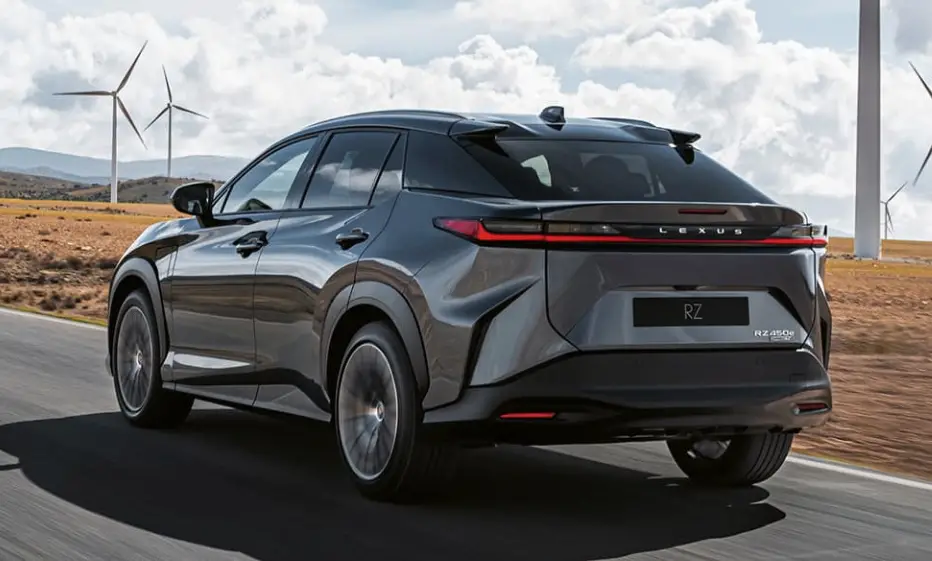Electric cars have revolutionized the way we think about transportation, offering a cleaner and more efficient alternative to gas vehicles. But if you’re considering making the switch or already own an electric vehicle (EV), one question likely lingers in your mind: how far can these cars actually travel without needing a charge? It’s a critical factor that influences everything from long road trips to daily commutes, and understanding it can make all the difference in your experience as an EV owner.
In this article, we’ll explore the fascinating world of electric car ranges, breaking down the factors that determine how far these vehicles can go on a single charge. Whether you’re curious about how driving habits affect battery life or which models offer the best range, we’ve got you covered with insights that go beyond the basics. Let’s dive in and uncover what you need to know to confidently hit the road with your electric car!
Understanding the Electric Car Range
Electric car range refers to the distance an EV can travel on a fully charged battery. Unlike gasoline vehicles, where range is tied to fuel tank size, electric cars depend on the capacity and efficiency of their batteries. This range can vary significantly across different models and manufacturers.
Factors That Affect Electric Car Range
Herr are the common factors that can affect electric car range.
1. Battery Size and Capacity
The size of the battery is the primary determinant of an EV’s range. Measured in kilowatt-hours (kWh), larger batteries store more energy, enabling the car to travel farther. For example, a compact EV with a 40 kWh battery might achieve a range of 150 miles, while a premium EV with a 100 kWh battery could go beyond 300 miles.
2. Your Driving Habits
Your driving style plays a huge role in determining how far your EV can go on a single charge. Aggressive acceleration, high speeds, and frequent braking can drain the battery faster. Conversely, smooth acceleration and maintaining consistent speeds help conserve energy.
3. Your Driving Speed and Aerodynamics
Driving at high speeds increases air resistance, which can reduce range. Electric vehicles are often designed with aerodynamic features to minimize drag, but driving slower—especially on highways—can significantly extend range.
4. Terrain and Elevation
Driving uphill consumes more energy as the car works harder to overcome gravity. On the flip side, downhill driving or cruising on flat terrain uses less energy, sometimes even regenerating power through regenerative braking systems.
5. Weather Conditions
Extreme temperatures impact battery performance. Cold weather can reduce range as batteries operate less efficiently in low temperatures, and energy is diverted to heat the cabin. Similarly, hot weather may require the use of air conditioning, which also affects range.
Average Range of Popular Electric Cars
Different EVs cater to different needs, and their range reflects this. Here’s a breakdown of some popular models:
- Tesla Model 3 Long Range: Up to 358 miles.
- Nissan Leaf: Around 150-226 miles, depending on the variant.
- Chevrolet Bolt EV: Approximately 259 miles.
- Hyundai Kona Electric: Up to 258 miles.
These figures represent ideal conditions. Real-world range may vary based on the factors mentioned earlier.
How Often Do Electric Cars Need Charging?
How frequently you’ll need to charge depends on your daily driving habits. If your commute is short—say 20-30 miles a day—you might only need to charge once every few days. Longer commutes or frequent trips will require more frequent charging.
Types of Charging and Their Impact on Range
1. Level 1 Charging
This is the slowest charging option, using a standard household outlet. It adds about 3-5 miles of range per hour, making it suitable for overnight charging for light daily use.
2. Level 2 Charging
Level 2 chargers are much faster, providing 15-30 miles of range per hour. These are common in homes with dedicated EV chargers or at public charging stations.
3. DC Fast Charging
Fast chargers can provide 60-80% of a full charge in 30-40 minutes, depending on the car. These are ideal for road trips but aren’t recommended for daily use, as frequent fast charging may degrade the battery over time.
Strategies to Maximize Electric Car Range
Here are the common helpful strategies to maximize electric car range
1. Make Use of Eco Modes
Many EVs have an “Eco” mode that limits power output and optimizes energy usage, helping you extend your range.
2. Precondition Your Car
Warming or cooling your car while it’s still plugged in can save energy, as it prevents the battery from being drained for climate control during your trip.
3. Plan Charging Stops when Driving on Long Distances
When traveling long distances, planning charging stops along your route ensures you won’t run out of power. Apps like PlugShare or ChargePoint can help you find nearby charging stations.
What Happens If an Electric Car Runs Out of Charge?
Running out of charge is similar to running out of gas—it leaves you stranded. Most EVs have built-in alerts to notify drivers when battery levels are critically low, allowing you to find a charging station in time. If the battery does deplete completely, roadside assistance or towing will be needed to reach the nearest charging point.
The Role of Regenerative Braking
One of the coolest features of EVs is regenerative braking. When you slow down, the car converts kinetic energy back into electrical energy, recharging the battery slightly. While it won’t add significant range, every bit helps, especially in stop-and-go traffic.
How Long Does an Electric Car Battery Last?
Modern EV batteries are designed to last 8-10 years or more, often with warranties covering up to 100,000 miles. While battery performance may degrade slightly over time, most EVs maintain a usable range well into their lifespan.
Innovations Enhancing Electric Car Range
The automotive industry continues to innovate to improve EV range. Advances like solid-state batteries, better aerodynamics, and improved energy management systems are pushing the boundaries of what’s possible. Some manufacturers are even exploring solar panels integrated into cars to provide additional energy.
Comparing Electric Vehicles Range to Gasoline Cars
Gasoline cars often have a range of 300-400 miles per tank. While many EVs are catching up, charging infrastructure remains a factor. Unlike gas stations, charging stations aren’t as ubiquitous, though their numbers are rapidly growing.
Are Long-Distance Road Trips Feasible in an Electric Car?
Absolutely! With careful planning, long road trips in an EV are entirely possible. Use fast-charging stations strategically, and make use of EV-friendly routes to ensure a smooth journey. Many drivers have successfully completed cross-country trips in electric cars.
Final Thoughts
The range of an electric car depends on various factors, from battery size to driving habits. Modern EVs are increasingly bridging the gap between gas and electric vehicles, offering impressive ranges that make them practical for daily commutes and long trips alike. Whether you’re an EV enthusiast or a curious buyer, understanding these dynamics helps you make informed decisions and fully embrace the electric future.

